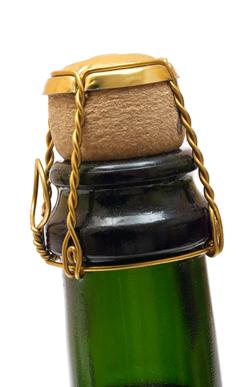The Service of Sparkling Wines, Part 1
31 October 2010By Edward M. Korry, CSS, CWE
 A server needs to seize the opportunity for determining the type of sparkling wine his or her customers prefer.
A server needs to seize the opportunity for determining the type of sparkling wine his or her customers prefer.
Champagne and sparkling wines conjure up images of celebration, elegance and pure enjoyment. While frequently perceived as merely a reception wine, the styles of sparkling wines vary enormously, and if properly understood can enhance a restaurant’s bottom line and a server’s income considerably. The key is to also provide commensurate quality service.
Many people refer to any sparkling wine as champagne, though only wine from the specific geographic appellation, 70 miles northeast of Paris, France, can rightfully be called Champagne. Champagne sets the standard for sparkling-wine production, and until 1990, other appellations both within and outside of France were able to refer to the champagne method on their labels. Since then no other EU wine may even refer to the term. In the United States, we have 14 semi-generic labels including champagne. Most U.S. sparkling-wine producers refer to their wines with the term CM/CV on the label. This refers to classic method and classic grape varieties, which includes chardonnay, pinot noir and pinot meunier.
The classic or traditional method produces wines that have the greatest complexity, sublimity, elegance and power, as represented by the best of Champagne and other regions. This is mainly due to the autolytic process of yeasts breaking down and having some of their components absorbed into the wine. With extended aging sous tirage the wine takes on greater complexity. That is why the Prestige Cuvées such as Dom Perignon or Roederer Cristal, Krug’s Grande Année or Bollinger RD cost so much more. The wine, made from the best-quality grapes, has undergone a second fermentation in the bottle and may lie undisturbed for up to a decade prior to disgorgement, or the process of removal of the dead yeast cells.
A less-expensive way and an off-shoot of the classic method is the transfer method that excludes the riddling portion of the process and transfers the wine from bottles to tank and then, once filtered, rebottled, losing some of the bubbles, which changes the mouthfeel. It is said that most classic-method wines have between 48 and 200 million bubbles in a 750ml bottle.
The other primary method for producing sparkling wine is the cuve close or bulk method as found in Asti, Brachetto d’Acqui or most of German Sekt wines. With highly aromatic grapes such as Moscato (in Asti) or Riesling, the results can be delicious even if lacking complexity.
A server needs to seize the opportunity for determining the type of sparkling wine his or her customers prefer. Aside from the level of complexity, the server should be aware of the general characteristics of the sparkling wines on the wine list. The server should especially take into consideration the level of sweetness of the wine. One hears of magical pairings such as champagne and strawberries, but unless the champagne has a greater sweetness than the strawberries, its flavors will be obscured.
The weight and intensity of the wine is just as significant, as one wants to match the levels so that the food is not diminished or vice versa. Finally, and perhaps most critically, the server should ascertain the price-category preference of his or her customers. Champagnes can run into hundreds of dollars a bottle on a wine list. Yet, there are perfectly good crémants from the Loire or Alsace in France; cava wines from the Penedès in Spain; Prosecco di Valdobiadene in Italy and sparklers from the Carneros AVA of Napa and Sonoma, the Anderson Valley in Mendocino, and the Columbia Valley in Washington state that can offer delightful experiences to customers.
Edward M. Korry, CSS, CWE, is an associate professor and the beverage & dining services department chair at Johnson & Wales University, Providence, R.I.
Photo Caption: © Marc Dietrich | Dreamstime.com, http://www.dreamstime.com/free-stock-image-champagne-bottle-neck-rimagefree549527-resi1793763
